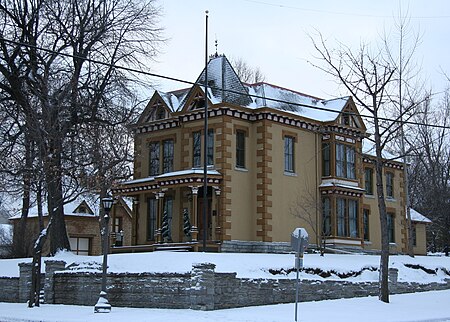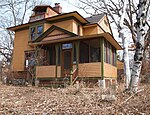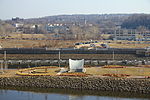Rau/Strong House
Houses completed in 1886Houses in Saint Paul, MinnesotaHouses on the National Register of Historic Places in MinnesotaItalianate architecture in MinnesotaNational Register of Historic Places in Saint Paul, Minnesota ... and 1 more
Second Empire architecture in Minnesota

The Rau/Strong House is a historic house and accompanying carriage barn in Saint Paul, Minnesota, United States. It is located in Saint Paul's West Side neighborhood. It was built 1884–86, with an eclectic Italianate/Second Empire/Eastlake movement design featuring a mansard roof and hammered quoin blocks. The Rau/Strong House was listed on the National Register of Historic Places in 1975 for its architectural significance as a finely crafted "urban estate" representative of Saint Paul's late-19th-century middle class residences.
Excerpt from the Wikipedia article Rau/Strong House (License: CC BY-SA 3.0, Authors, Images).Rau/Strong House
Humboldt Avenue, Saint Paul West Side
Geographical coordinates (GPS) Address Nearby Places Show on map
Geographical coordinates (GPS)
| Latitude | Longitude |
|---|---|
| N 44.929444444444 ° | E -93.085 ° |
Address
Lightsmith General Contractor
Humboldt Avenue
55107 Saint Paul, West Side
Minnesota, United States
Open on Google Maps









